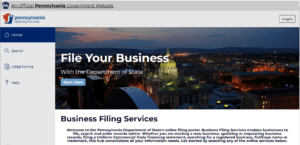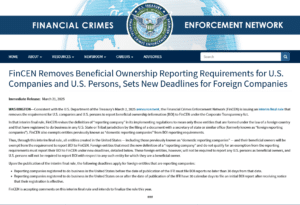In a year when no single major piece of tax legislation moved through Congress to the desk of the President, a number of tax bills combined to add substantial changes to the Internal Revenue Code which will affect businesses in 2015 filings and beyond.
On December 16, 2015, Senate Finance Committee Chairman Orrin Hatch (R-Utah), House Ways and Means Committee Chairman Kevin Brady (R-Texas), and Senate Finance Committee Ranking Member Ron Wyden (D-Ore.) announced the Protecting Americans from Tax Hikes (PATH) Act of 2015 although legislation enacted earlier in 2015 and in 2014 also contributed a fair share. This legislation was designed to provide permanent tax relief for hard-working American families, college students, charities, small business and enterprises on the forefront of innovation.
Some of the more important provisions of that legislation, as well as certain other bills containing tax provisions for business, follows:
Note that the recent legislation responsible for most of the changed rules for 2016 consists of the following listing:
- The Protecting Americans from Tax Hikes (PATH) Act of 2015;
- The Fixing America’s Surface Transportation (FAST) Act;
- The Bipartisan Budget Act of 2015;
- The Surface Transportation and Veterans Health Care Choice Improvement Act of 2015;
- The Trade Preference Extension Act of 2015; and
- The Achieving a Better Life Experience Act of 2014 (ABLE Act), part of the Tax Increase Prevention Act of 2014
Of these bills, the PATH Act is the most significant.
Some of the more important business provisions of these new laws that are worthy of every taxpayer’s consideration include:
Enhanced Internal Revenue Code §179 expense/deductions:
For tax years beginning in 2014,
(1) the dollar limitation on the expensing deduction under Code Sec. 179 was $500,000; and
(2) the investment-based reduction in the dollar limitation began to take effect when property placed in service in the tax year exceeded $2 million (the investment ceiling).
The provisions in effect expired at the end of 2014 without an extension for 2015.
Under prior law, for tax years beginning after December 31, 2014, the maximum expensing limit was to have dropped to $25,000, and the investment ceiling was to have dropped to $200,000. Up to $250,000 of qualified real property – qualified leasehold improvement property, qualified restaurant property, and qualified retail improvement property – was eligible for Code §179 expensing. Under a carryover limitation for qualifying real property, no portion of disallowed expensing because of the active business taxable income limit in Code §179(b)(3)(A), could be carried to a tax year beginning after 2014.
In a very important change for businesses, under the PATH Act, the $500,000 expensing limitation and $2 million investment ceiling amount are retroactively extended (to apply to years beginning after December 31, 2014) and, even more importantly, made permanent. Additionally, the PATH Act made a number other Code §179 changes, including the modification of the expensing limitation with respect to qualified real property by eliminating the $250,000 cap beginning in 2016 and by treating air conditioning and heating units placed in service in tax years beginning after 2015 as eligible for expensing.
Finally, the new law allows for indexing both the $500,000 and $2 million limits for inflation beginning in 2016.
Tangible Property de minimis expensing safe harbor for taxpayers with no AFS (applicable financial statement) raised to $2,500:
The final tangible property regulations permit businesses to elect to expense their outlays for “de minimis” business expenses. If the taxpayer is eligible for the de minimis safe harbor election, and chooses it, an amount paid to acquire or produce any eligible unit of property (or any eligible material or supply) is deducted under Code Sec. 162 in the year paid or incurred.
A key element of the regulations was that use of the de minimus expensing rule was capped at $500 for taxpayers that had no applicable financial statement (audited financial statements, etc.) Beyond the scope of this article, suffice to say that the limitation was most harmful to smaller businesses. Those larger and more sophisticated companies that had applicable financial statements were able to expense up to $5,000. The new law moves the de minimus expensing allowance for those businesses up to a new threshold of $2,500.
A greater number of building improvements eligible for bonus depreciation:
The PATH Act enhances the bonus depreciation opportunities for business taxpayers undertaking building improvements. Under prior law, “qualified” leasehold improvement property qualified for bonus depreciation. Such property included any improvement to an interior portion of a building that was nonresidential real property, if:
(1) the improvement was made under or pursuant to a lease;
(2) the interior building portion was to be occupied exclusively by the lessee or sublessee;
(3) the improvement was placed in service more than three years after the date the building was first placed in service by any person (i.e., not necessarily the taxpayer) and
(4) the improvement was a structural component of the building.
Qualified leasehold improvement property did not, under prior law, include any improvement for which the expense was attributable to (a) enlargement of the building, (b) any elevator or escalator, (c) any structural component benefiting a common area, or (d) the internal structural framework of the building.
Noteworthy under the PATH Act, “qualified” leasehold improvement property is no longer eligible for bonus depreciation. Instead, the legislation provides a new designation and that property placed in service after December 31, 2015, that is “qualified improvement property” will be eligible for bonus depreciation.
Through these changes, the PATH Act liberalizes the prior rules in three ways:
(1) building improvements are eligible for bonus depreciation regardless of whether the improvements are property subject to a lease;
(2) the improvement need not be placed in service more than three years after the date the building was first placed in service; and
(3) structural components of a building that benefit a common area are no longer excluded from the definition of qualified improvements.
Expansion of the research credit of eligible small business to offset AMT:
For research credits determined for tax years that begin after December 31, 2015, eligible small businesses may claim the credit against their alternative minimum tax liability as well as their regular tax liability.
Expansion of the research credit of qualified small business may offset payroll taxes:
For tax years that begin after December 31, 2015, qualified small businesses may elect to claim a portion of their research credit as a payroll tax credit against their employer FICA tax liability, rather than against their income tax liability.
Expansion of the Work Opportunity Tax Credit:
The Work Opportunity Tax Credit allows employers who hire members of certain targeted groups to get a credit against income tax of a percentage of wages. The WOTC varies by targeted group.
The PATH Act retroactively extended the WOTC for five years so that it applies to eligible veterans and non-veterans who begin work for the employer on or before December 31, 2019. Additionally, effective for individuals who begin work for an employer after December 31, 2015, the WOTC also applies to employers who hire workers who are members of a new targeted group—qualified long-term unemployed individuals (i.e., those who have been unemployed for 27 weeks or more).
Related party loss rules strengthened:
In an effort to strengthen and expand the related party transaction rules, the Path Act adds several new provisions.
Under the Code § 267(a) related party loss rules, no deduction is generally allowed for losses from sales or exchanges of property (except in corporate liquidations), directly or indirectly, between certain related persons. Under Code Sec. 267(d), if a taxpayer acquires property by purchase or exchange from a transferor who sustained a loss not allowed because of the related taxpayer rules, any gain realized by the taxpayer on a sale or other disposition of the property is recognized only to the extent that the gain exceeds the amount of the loss that is properly allocable to the property sold or otherwise disposed of by the taxpayer.
Under the PATH Act, for sales and exchanges of property acquired after December 31, 2015, the general rule of Code Sec. 267(d) doesn’t apply to the extent gain or loss on property that has been sold or exchanged is not subject to federal income tax in the hands of the transferor immediately before the transfer, but any gain or loss on the property is subject to federal income tax in the hands of the transferee immediately after the transfer.
Thus, the related party loss rules are modified to prevent losses from being shifted from a tax-indifferent party (e.g., a foreign person not subject to U.S. tax) to another party in whose hands any gain or loss with respect to the property would be subject to U.S. taxation.
Summary
While all of the above-noted changes will affect a broad base of our clients, perhaps the most important element of the PATH Act is the permanency granted a number of provisions that are beneficial to businesses therein adding a level of certainty to tax planning as companies move forward.
As always, questions and comments may be submitted to Bob Grossman or Don Johnston








